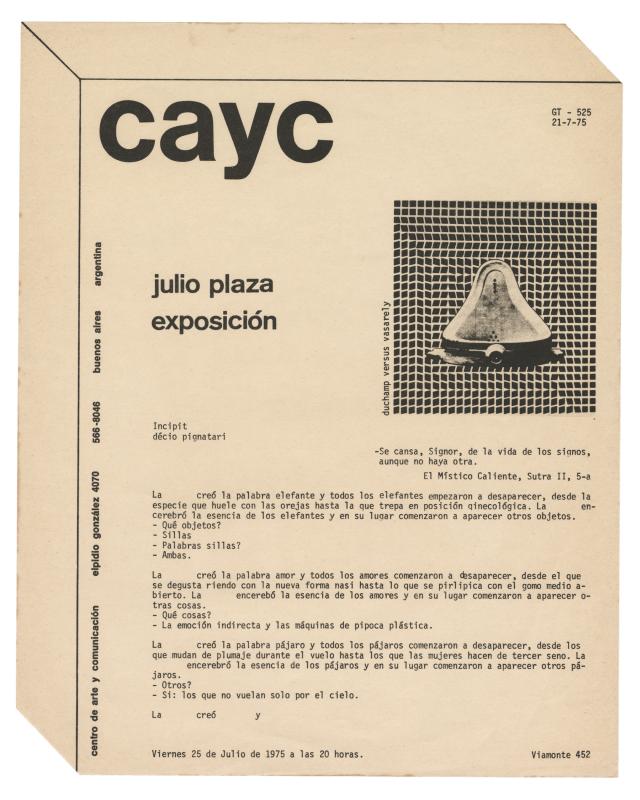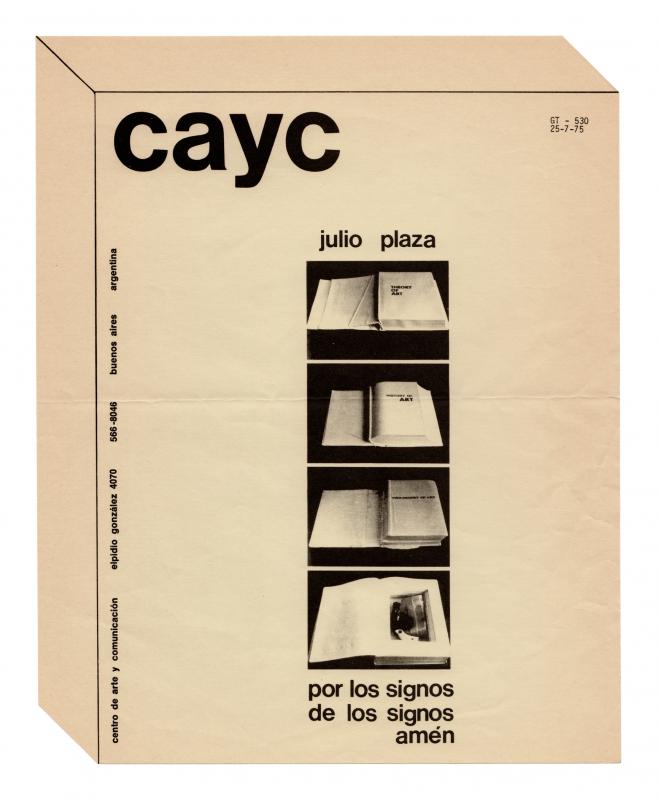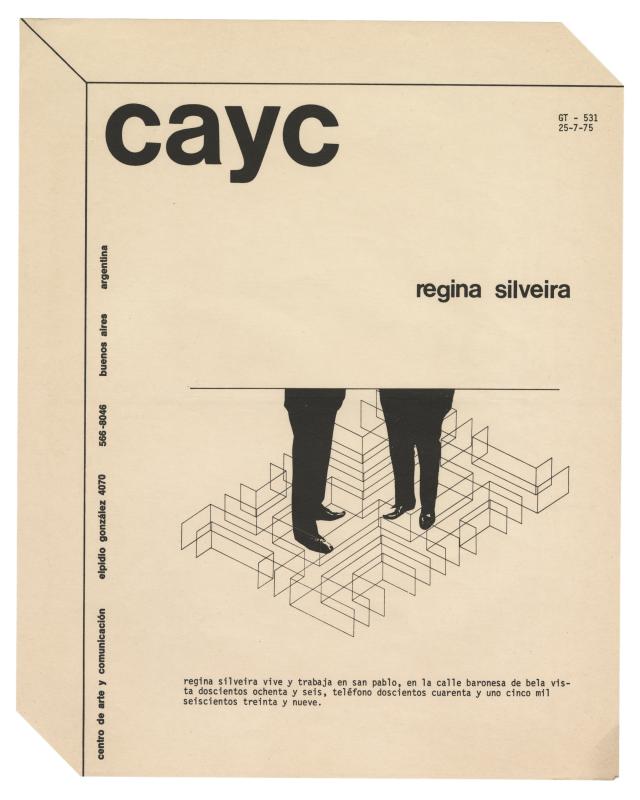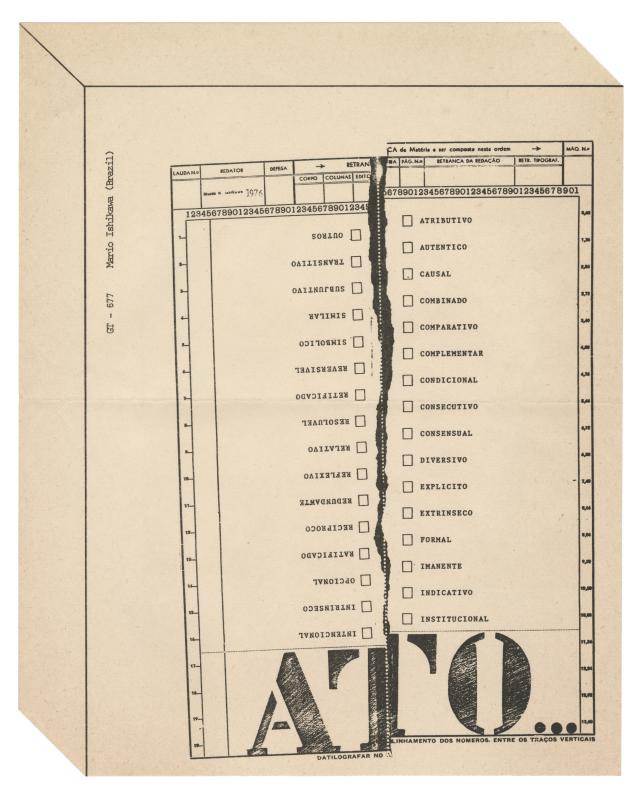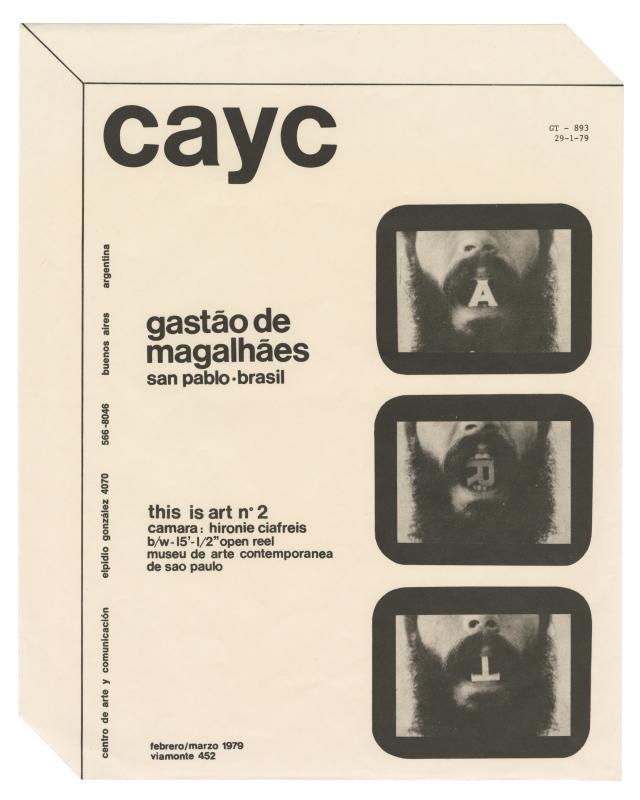Ever since it was founded, the CAYC (Centro de Arte y Comunicación), helmed by the cultural promoter, artist, and businessman Jorge Glusberg, was intended as an interdisciplinary space where an experimental art movement could flourish. The establishment of collaborative networks connecting local and international artists and critics played an important role in this process. The exhibitions shone a light on these exchanges, in which overviews of trends or individual artists provided an introduction to the innovations of international contemporary art and made Argentine and Latin American artists better known on the global scene.
Together with Julio Plaza (GT-525; 1476852, GT-530; 1476853), Regina Silveira (GT-526; doc. no. 1476849, GT-531; doc. no. 1476854), and Mario Ishikawa (GT-677; doc. no. 1477405), among others, Gastão de Magalhães (b. 1953) was one of the artists who became associated with the CAYC through the efforts of Walter Zanini (1925–2013), the critic, agent, and director of the MAC-USP (Museu de Arte Contemporânea da Universidade de São Paulo) from 1963 to 1978. Glusberg and Zanini contributed to the expansion of a “transnational dialogic territory” by organizing a variety of initiatives including exchanges of regional and international artists, exhibitions, and symposiums (Luiza Mader Paladino, Caiana, 2016).
In the 1970s Gastão de Magalhães, a multidisciplinary artist, was active in the Brazilian art scene, part of the network of mail art enthusiasts, and involved in important events and exhibitions. He spent a considerable part of his career exploring new supports for art projects, assisted by the Spanish artist Francisco Iñarra. De Magalhães was actively involved in the art community that was connected by mail. In 1975—taking advantage of the production resources that the MAC was making available to artists—he produced several series. Circulação Postal (1975/76) was, in fact, an imaginary exhibition that traced the routes taken by sundry postcards exchanged between São Paulo and other places around the world (GT-701; doc. no. 1477345). In 1975 he used black-and-white photographs to create his series of postcards and stamps called This is art (GT-893; doc. no. 1477837).
This newsletter was used to announce the opening of his solo show Ocupación topológica at the CAYC. Forerunners to this project were Ocupações de cantos (1977), presented at the XIV São Paulo Biennial along with Composição e sombras (1977), which were included in the “Uncatalogued Art” section. This was the same biennial where the Grupo de los Trece was awarded the Grande Prêmio Itamaraty. Both projects were created keeping in mind the architectural space where they were exhibited. De Magalhães’s experimental work with corners and walls led him to develop a method for exploring space.
The exhibition at the CAYC expanded this approach by pairing photographic documentation with visual props and individual experiences that challenged architectural spaces. These works also sought to construct a “territory of freedom” to address the repression and violence suffered by artists working in countries that were under the thumb of authoritarian regimes (including the Brazilian military dictatorship that lasted twenty-one years). Magalhães’s video This is art (1975) was also shown while the exhibition was in progress at the CAYC.

